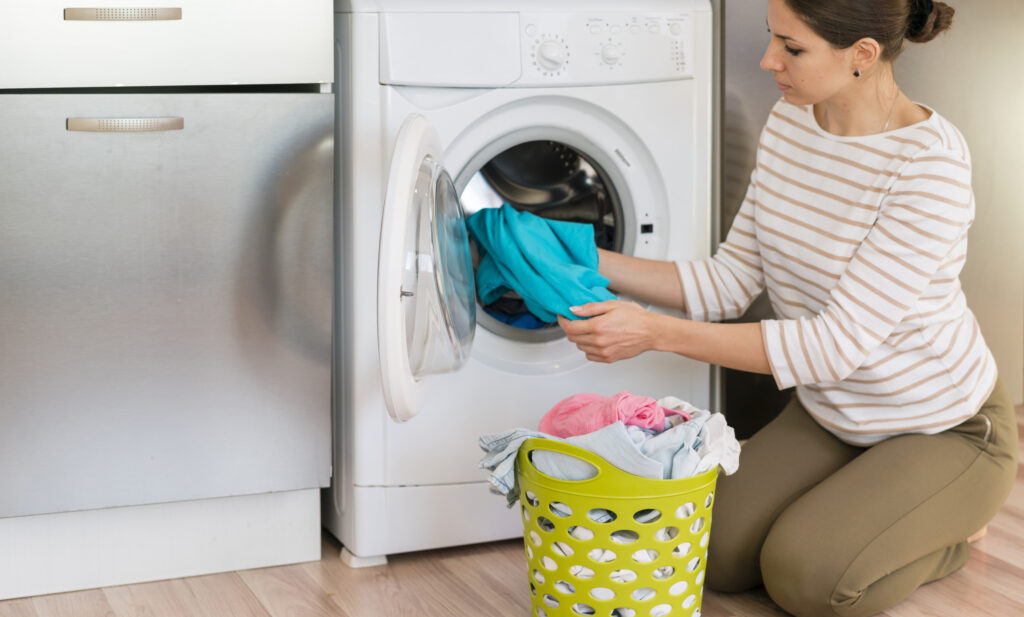Washing machines are essential household appliances that handle our laundry with ease. However, like any other machine, they are also vulnerable to problems. When your washing machine encounters issues, it can disrupt your routine and cause inconvenience. Understanding common washing machine repair problems and knowing how to address them can save you time and money. In this blog, we’ll delve into the top five washing machine repair problems and provide practical solutions to help you get your appliance back in working order.
Table of Contents
1. Washing Machine Won’t Start

Problem Description: One of the most frustrating washing machine repair problems is when the machine refuses to start. This issue can stem from various causes, such as power supply problems, faulty door locks, or issues with the machine’s control board.
Possible Causes and Solutions:
- Power Supply Issues: Ensure the washing machine is properly plugged in and the power outlet is functional. Check if the circuit breaker has tripped. If necessary, reset the breaker or try plugging the machine into a different outlet.
- Faulty Door Lock: Modern washing machines have a door lock mechanism that prevents the machine from starting if the door is not properly closed. Inspect the door latch for damage or misalignment. If the latch is faulty, you may need to replace it.
- Defective Control Board: The control board manages the washing machine’s functions. If it’s malfunctioning, the machine might not start. In this case, you may need to consult a professional to diagnose and replace the control board.
2. Washing Machine Won’t Drain
Problem Description: A washing machine that won’t drain can leave you with a tub full of soapy water. This problem is often caused by clogs in the drainage system or issues with the pump.

Possible Causes and Solutions:
- Clogged Drain Hose: The drain hose might be obstructed by debris or kinks. Check the hose for blockages and straighten any kinks. You can also detach the hose and flush it with water to clear any clogs.
- Blocked Pump Filter: Many washing machines have a pump filter that can become clogged with lint, coins, or small objects. Locate the filter (usually at the front of the machine near the bottom) and clean it thoroughly.
- Malfunctioning Pump: If the pump itself is faulty, it might need to be replaced. Listen for unusual noises during the draining cycle; if you suspect the pump is the issue, consult a repair professional.
3. Washing Machine Leaking Water
Problem Description: Water leakage from a washing machine can cause significant water damage and create a mess. This problem can be due to several reasons, such as hose issues, door seal problems, or internal component failures.

Possible Causes and Solutions:
- Loose Hoses: Check the inlet and drain hoses for looseness or leaks. Ensure that the connections are secure. Tight any loose fittings and replace any damaged hoses.
- Damaged Door Seal: The door seal (or gasket) can wear out over time, leading to leaks. Inspect the seal for tears or deformities. Clean it to remove any detergent residue and replace it if necessary.
- Internal Leaks: Internal leaks can occur from faulty components like the tub or pump. Inspect the machine for any visible leaks and consult a technician if you suspect internal damage.
Sometimes the problems are because of the manufacturing issues in washing machines.In those conditions, the default is not yours. If you wanna save yourself and your money from these washing machines. Check out my blog post on “10 Worst washing machine brands. Washing machine brands to avoid buying “
4. Washing Machine Making Loud Noises
Problem Description: Unusual noises during a washing machine cycle can be bothersome and indicate mechanical issues. Common noises include banging, grinding, or grassing sounds.
Possible Causes and Solutions:
- Unbalanced Load: An unbalanced load can cause the machine to shake and produce loud noises. Make sure that you distribute clothes evenly in the drum. If the problem persists, check for leveling feet and adjust them if necessary.
- Worn-Out Drum Bearings: The drum bearings support the drum’s rotation. Over time, they can wear out and cause grinding noises. If you hear such noises, you might need to replace the bearings.
- Foreign Objects: Items like coins or buttons can get trapped in the drum or pump, causing noise. Check the drum and filter for any foreign objects and remove them.
5. Washing Machine Not Spinning Properly

Problem Description: A washing machine that doesn’t spin properly can leave clothes wet and heavy, affecting the efficiency of your laundry routine. This problem can be due to various factors, including load imbalance, faulty drive belts, or motor issues.
Possible Causes and Solutions:
- Overloaded Machine: An overloaded machine can struggle to spin effectively. Ensure that you’re not putting too many clothes in the drum and try spinning a smaller load to see if the issue persists.
- Faulty Drive Belt: The drive belt connects the motor to the drum. If it’s worn or broken, the drum may not spin. Inspect the belt for damage and replace it if needed.
- Malfunctioning Motor: The motor controls the spinning mechanism. If the motor is defective, it might need to be repaired or replaced. Consult a professional if you suspect motor issues.
Conclusion
Washing machine repair problems can range from minor annoyances to major issues that require professional intervention. By understanding these common problems and their solutions, you can troubleshoot and address many issues on your own. However, if you encounter complex problems or if repairs seem beyond your expertise, don’t hesitate to seek help from a qualified technician. Proper maintenance and timely repairs will ensure that your washing machine continues to serve you efficiently for years to come.










